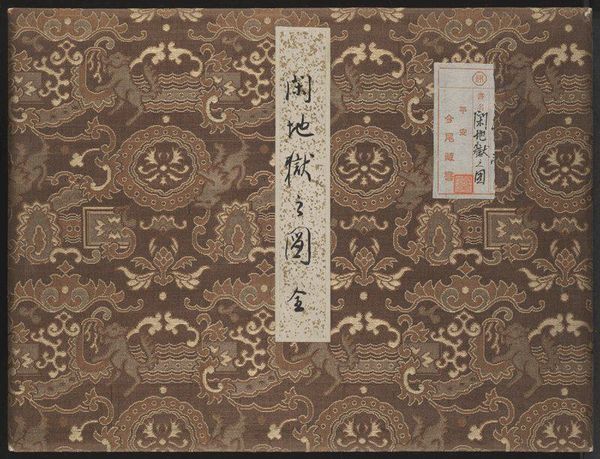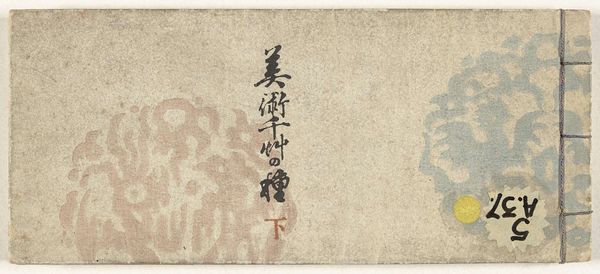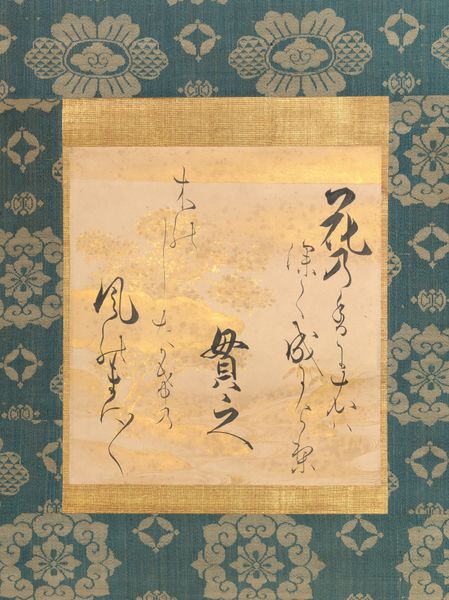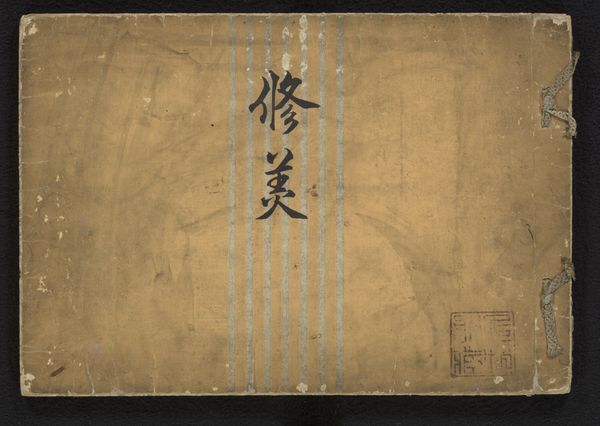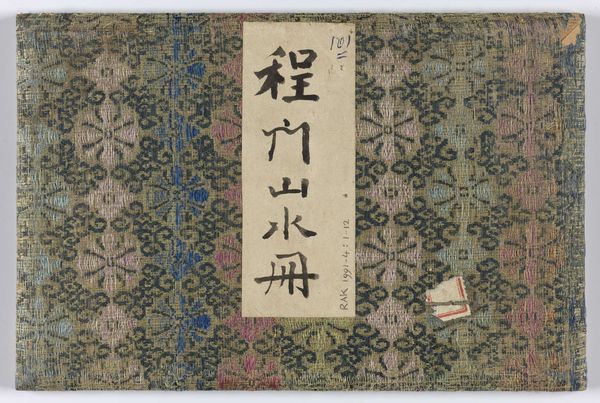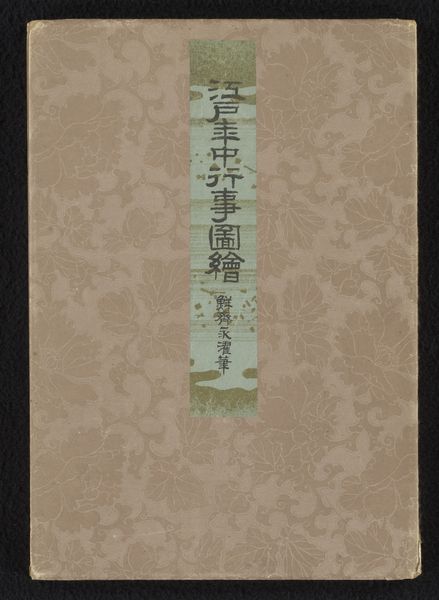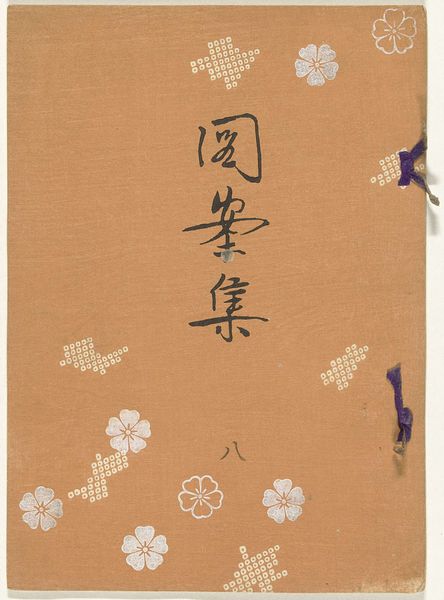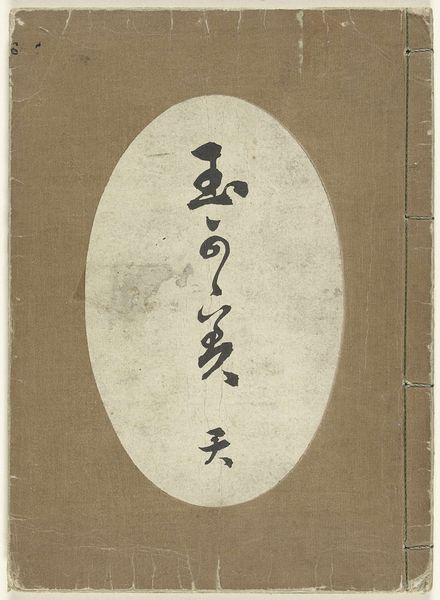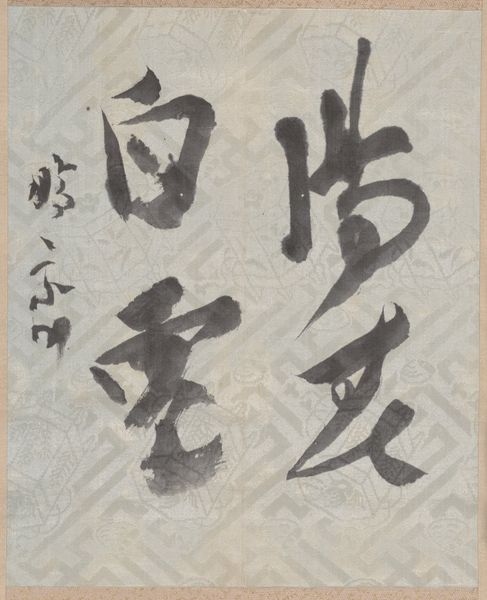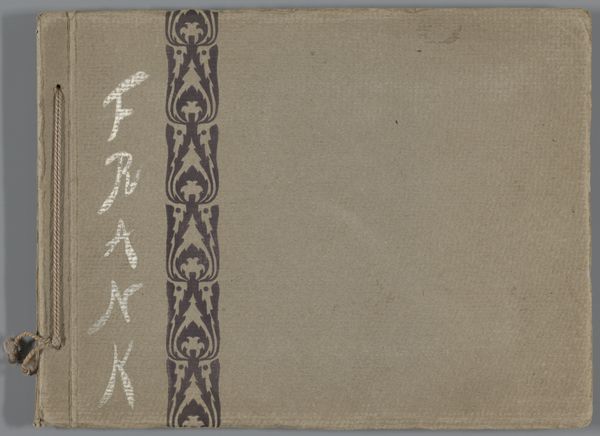
paper, ink
#
book
#
asian-art
#
japan
#
paper
#
personal sketchbook
#
ink
Dimensions: 1 × 7 3/4 × 7 7/8 in. (2.54 × 19.69 × 20 cm)
Copyright: No Copyright - United States
Curator: Looking at the cover, I am reminded of vintage textiles, the way patterns whisper stories across generations. The subtle texture seems so inviting. What can you tell me about this piece? Editor: This is "Juben Jugi" a sketchbook created in 1903 by Taigadō Teiryō. The artwork currently resides here at the Minneapolis Institute of Art and the artist used ink on paper to render this amazing pattern. It seems so serene and meticulously crafted. I wonder, what's its broader historical relevance? Curator: Considering its historical and cultural context, we see Taigadō Teiryō situating himself within a rich artistic tradition while engaging with emerging aesthetic movements. Japan in the early 1900s was experiencing rapid modernization alongside a renewed interest in traditional arts. His sketchbook stands as a fascinating intersection of both, documenting everyday life with a deeply cultivated sensibility. The use of the sketchbook becomes almost an act of resistance against the sweeping tide of Western influence. Editor: Resistance is a lovely thought! I imagined this as just personal—a glimpse into Teiryō's own little world of beauty. And there’s something so soothing in this precise, honeycomb-like pattern. Almost hypnotic! Was it intended to be meditative? Curator: I think your sense of "soothing" taps into a cultural appreciation for meditative processes inherent in many traditional art forms. Perhaps it offered a quiet space amidst societal change—but a purely meditative, de-politicized reading, might gloss over Teiryō's subtle negotiations of identity and cultural change during the Meiji era. We could frame the work as quiet activism of sorts. The choice to use traditional techniques as a statement of cultural preservation is evident here. Editor: Quiet activism! That perspective really shifts the focus. Now the cover design has so much more intent—it anchors something ancient even as the pages held inside collected day-to-day experiences from a modernizing Japan. I love when art reframes what is so evident to offer such different perspective. I find it to be in equal measure calming and contemplative. What a journey it takes us on, right? Curator: Yes, absolutely. The enduring power of “Juben Jugi” lies not only in its aesthetic appeal but also its ability to speak across time, engaging contemporary viewers in vital conversations about cultural identity and the artist's role in navigating social change.
Comments
No comments
Be the first to comment and join the conversation on the ultimate creative platform.
